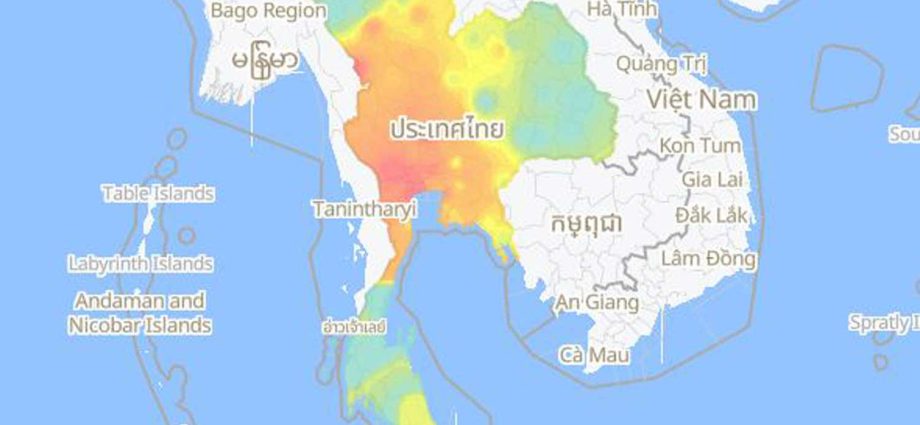
Forty-one of the 77 provinces were shrouded with unsafe levels of ultra-fine dust, the greatest number in the Central Plain, on Monday morning.
The Geo-Informatics and Space Technology Development Agency (Gistda) reported the accumulation of particulate matter 2.5 micrometres and less in diameter (PM2.5) at 8am.
Unsafe PM2.5 levels ranged from 38.1 to 112.3 microgrammes per cubic metre of air over the past 24 hours. The government’s set safe threshold is 37.5µg/m³.
Three provinces were blanketed by red-code levels of PM2.5, meaning a serious impact on health. The highest, 112.3µg/m³, was measured in Samut Songkhram to the west of Bangkok, followed by 92.7µg/m³ in adjacent Samut Sakhon and 76.7µg/m³ in nearby Nakhon Pathom.
Thirty-eight other provinces were covered by orange-code levels of PM2.5 from 38.1 to 71.4µg/m³, meaning the smog had started to affect health.
In a descending order, they included Ratchaburi, Ang Thong, Chai Nat, Sing Buri, Nonthaburi, Ayutthaya, Pathum Thani, Phetchaburi, Suphan Buri, Kanchanaburi, Uthai Thani, Saraburi, Lop Buri, Nakhon Sawan, Bangkok, Phichit and Chachoengsao.
Other provinces with orange levels were Samut Prakan, Kamphaeng Phet, Chon Buri, Sa Kaeo, Tak, Prachuap Khiri Khan, Phitsanulok, Sukhothai, Lamphun, Nakhon Ratchasima, Prachin Buri, Rayong, Nong Khai, Phetchabun, Nakhon Nayok, Loei, Nong Bua Lam Phu, Uttaradit, Chanthaburi, Udon Thani and Chaiyaphum.
The PM2.5 level in Bangkok averaged 55µg/m³. Don Muang district recorded the highest level of 70µg/m³, followed by 69.6µg/m³ in Laksi and 62.3µg/m³ in Nong Khaem.
Gistda reported that on Sunday there were 217 hotspots in the country, mostly in farmland. Meanwhile, there were 812 hotspots in Cambodia, 391 in Myanmar, 99 in Laos and 81 in Vietnam.

